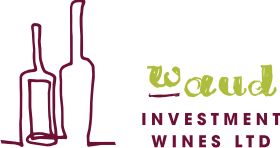Brand, Timing & Vintage Appeal
Bordeaux still remains the hub and apex of the investment market. The top 40 châteaux still produce a tantalisingly small amount for the world market and can offer excellent returns for the investor.
The very top Chateaux such as Latour, Margaux, Haut Brion, Lafite and Mouton Rothschild are all blue-chip estates with excellent, historical track records. (although Latour does not take part in En Primeur) Purchase timing as with any investment is essential. Dependent upon leading critics and our own views, we may recommend that you purchase an ‘En-Primeur’ portfolio which is a method for purchasing wine early. Essentially, the wines are sold as ‘futures’ i.e. before they have been bottled.
Key Benefits
Price: Typically, wines are purchased at the lowest market price.
Provenance: This has to be one of the greatest advantages of purchasing En-Primeur. On arrival to the UK all purchases move straight into our bonded, temperature and humidity-controlled storage facility. The wines are stored securely, in optimal conditions. Furthermore, En-Primeur purchasing gives buyers the assurance that they have owned a wine since before it was even bottled and they know precisely where the wine has been stored during its entire life.
Bottle Size: We are able to request ‘rare’ special bottle sizes prior to bottling.
Generally, the finest wines from the most outstanding vintages have delivered the best returns to investors. There have been some outstanding vintages over time (1982, 86, 90, and 2000) and more recently 2009, 2010 and 2016 which have been critically acclaimed as three of the greatest vintages in living history.
Composition of a Fine Wine Investment portfolio
From an investment perspective, the question now is: What separates fine wine from purely commercial wine?
First of all, there has to be a strong demand in the secondary market. Then, it is also important that a wine has the ability to improve in bottle, that it has longevity and a record of excellence. As mentioned earlier, Chateau Lafite will last for 50 to 100 years and has an excellent reputation going back several centuries. Critical opinion also plays a role. 34 years ago, Robert Parker became famous when he rated the superb 1982 Bordeaux vintage, using his 100 point score. He helped demystify wine and bring it to a much larger audience.
Today fine wine is rated by a number of highly-regarded critics, some of them specializing in certain wine-growing regions only. Traditionally, only wines that score more than 90 points are deemed to be worth buying.
In 2010 Bordeaux took the lion’s share and accounted for 95% of Live-ex’s exchange turnover, with the five First Growths taking 52% of the trade by value. However, in recent times, we have observed a shift from the First Growths to the so-called Super Seconds. Robert Parker dubbed them “The Magical 20” and according to his view, these estates produce wines of first-growth quality although technically they aren’t. Many of these so-called Magical 20 wines – such as Leoville Las Cases, Lynch Bages and Pontet Canet saw a significant lift in demand. There is also an increase in sales from Italy – including Super Tuscans such as Sassicaia and Ornellaia.

